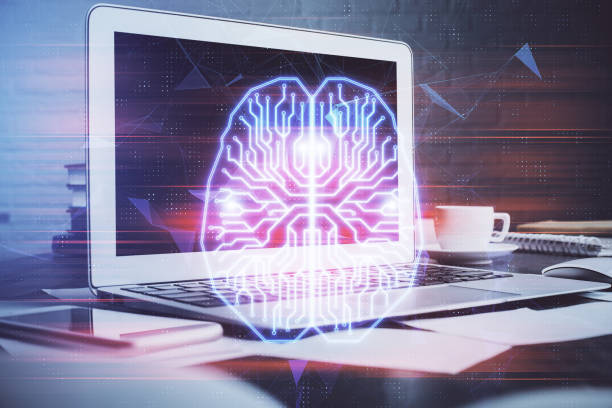What is an Artificial Intelligence Robot? Definitions and Basic Concepts
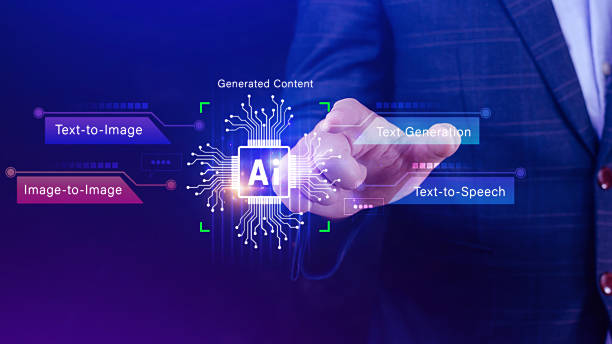
Today, the term #Artificial_Intelligence_Robot is increasingly heard in various circles.
But what exactly is an artificial intelligence robot? In simple terms, an artificial intelligence robot (Artificial Intelligence Robot) is a combination of two important areas of technology, namely artificial intelligence (AI) and robotics.
These robots, using algorithms and machine learning models, are able to perform tasks that require human intelligence and decision-making.
In other words, an artificial intelligence robot can not only move and perform physical tasks (like a traditional robot), but also process information, recognize patterns, solve problems, and even learn from its experiences.
These features distinguish an artificial intelligence robot from other types of robots.
In fact, an artificial intelligence robot is a type of intelligent Agent that is able to sense its environment, process information, and take appropriate actions based on it.
These actions can include movement, manipulation of objects, communication with humans or other robots, or even complex decision-making.
The main goal of designing and building an artificial intelligence robot is to create systems that can automatically and without the need for direct human intervention, perform tasks that usually require human intelligence and cognitive abilities.
For example, an artificial intelligence robot can work as a production line worker in a factory, help nurses in a hospital, assist farmers in harvesting crops on a farm, or even act as an exploration astronaut in space.
Are you tired of your company’s website not meeting your expectations? With Rasaweb, design a professional website that showcases the true face of your business.
✅ Increase the attraction of new customers and sales leads
✅ Increase the credibility and trust of your brand among the audience
⚡ Get free website design consultation!
A Brief History of Intelligent Robots
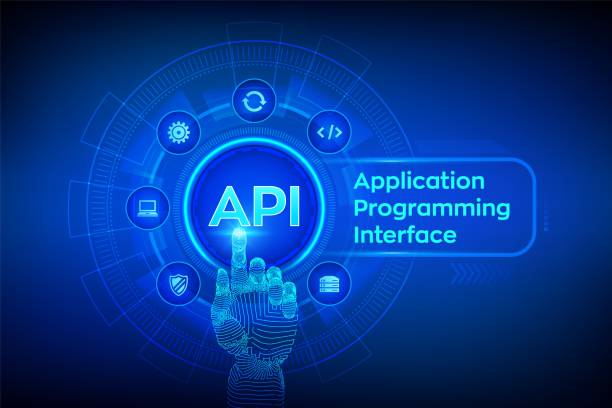
The idea of building intelligent robots has a long history and goes back to myths and science fiction stories.
But the first serious attempts to build an artificial intelligence robot began in the 1950s and 1960s.
During this period, researchers, using symbolic and rule-based methods, tried to create systems that could solve problems and make decisions.
One of the first successful examples in this field was the ELIZA program, which could communicate with humans in natural language.
However, these methods faced many limitations and could not model complex issues and the real world well.
In the 1980s and 1990s, with the emergence of neural networks and machine learning algorithms, a new approach emerged in the field of artificial intelligence and, consequently, artificial intelligence robots.
These methods allowed robots to learn from data and perform their tasks without the need for explicit programming.
In recent years, with remarkable advances in fields such as deep learning, natural language processing, and computer vision, we are witnessing the emergence of smarter robots that are capable of performing more complex tasks.
These robots are widely used in various industries, including manufacturing, healthcare, transportation, and services, and play an important role in improving productivity and the quality of human life.
In fact, the use of artificial intelligence robots in any industry has many advantages.
The Main Components of an Artificial Intelligence Robot
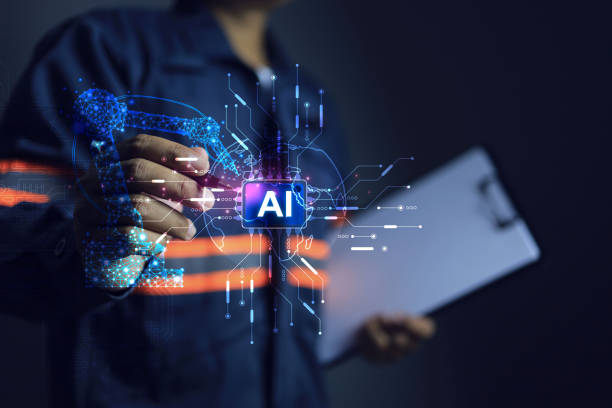
An artificial intelligence robot consists of various components, each of which plays an important role in its overall performance.
In general, these components can be divided into three main categories:
- Sensors
- Processors
- Actuators
Sensors are responsible for collecting information from the surrounding environment.
This information can include visual data (such as images and videos), audio data (such as sounds and speech), sensory data (such as temperature, pressure, and humidity), or positional data (such as position and orientation).
Sensors help artificial intelligence robots to be aware of environmental conditions and be able to make decisions based on them.
Processors are responsible for processing the information collected by the sensors and making decisions about appropriate actions.
Processors usually consist of one or more computers that use algorithms and machine learning models to analyze information and make decisions.
The processing power of processors directly affects the robot’s ability to perform complex tasks.
Actuators are responsible for performing physical actions.
These actions can include movement, manipulation of objects, communication with humans or other robots, or performing other physical tasks.
Actuators usually consist of motors, pumps, gearboxes, and other mechanical components.
In addition to these components, an artificial intelligence robot usually needs a power source (such as a battery or AC power supply) and a communication system (for communicating with humans or other systems).
Finally, an artificial intelligence robot can function correctly when all these components are well coordinated with each other.
| Components | Function | Examples |
|---|---|---|
| Sensors | Collecting information from the environment | Cameras, microphones, temperature sensors, pressure sensors |
| Processors | Processing information and decision-making | Computers, microcontrollers, GPUs |
| Actuators | Performing physical actions | Motors, pumps, gearboxes |
Types of Artificial Intelligence Robots Based on Application
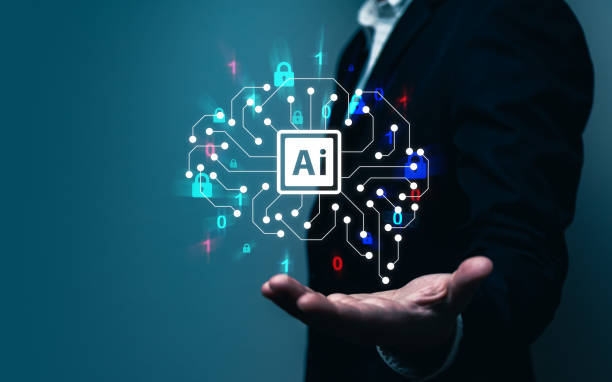
Artificial intelligence robots have different types based on their application.
Some of these types include:
- Industrial robots
- Service robots
- Medical robots
- Military robots
Industrial robots are used in factory production lines to perform tasks such as welding, painting, packaging, and assembling parts.
These robots are usually very accurate and fast and can work continuously and without fatigue.
The use of industrial artificial intelligence robots can help increase productivity and reduce costs.
Service robots are designed to provide services to humans.
These robots can be used in various environments such as homes, hospitals, hotels, and restaurants.
Some examples of service robots include cleaning robots, nurse robots, waiter robots, and guide robots.
These robots can help humans perform daily tasks and improve their quality of life.
Medical robots are used in hospitals and medical centers to assist doctors and nurses.
These robots can help in performing precise surgeries, providing medication, transferring patients, or performing other medical tasks.
The use of medical artificial intelligence robots can help reduce human errors and improve treatment outcomes.
Military robots are used in armies to perform tasks such as reconnaissance, surveillance, bomb disposal, or conducting military operations.
These robots are usually very resistant and powerful and can work in harsh and dangerous conditions.
The use of military artificial intelligence robots can help reduce human casualties and increase the effectiveness of military operations.
Are you worried that your company’s old website is scaring away new customers? Rasaweb solves this problem by designing a modern and efficient corporate website.
✅ Increases the credibility of your brand.
✅ Helps to attract targeted customers.
⚡ Contact Rasaweb for a free consultation!
Advantages of Using Artificial Intelligence Robots

The use of artificial intelligence robots has many advantages, some of the most important of which include:
- Increased productivity
- Reduced costs
- Improved quality
- Increased safety
- Performing dangerous tasks
Increased productivity is one of the most important advantages of using artificial intelligence robots.
Robots can work continuously and without fatigue and perform tasks faster and more accurately than humans.
This can help increase productivity in various industries.
Reduced costs is another advantage of using artificial intelligence robots.
Although the purchase and maintenance of robots may be expensive, in the long run, their use can lead to reduced labor costs, reduced waste, and increased productivity.
Improved quality is also another advantage of using artificial intelligence robots.
Robots can perform tasks with greater accuracy and consistency than humans.
This can help improve the quality of products and services.
Increased safety is another advantage of using artificial intelligence robots.
Robots can perform dangerous tasks without endangering human lives.
This can help increase safety in work environments.
Performing dangerous tasks is another advantage of using artificial intelligence robots.
Robots can work in dangerous environments such as mines, nuclear power plants, or war zones and perform tasks that are very dangerous for humans.
In this way, the use of artificial intelligence robots can play an important role in protecting human lives.
Artificial intelligence robots with all these advantages can help us.
Challenges Facing the Development of Artificial Intelligence Robots
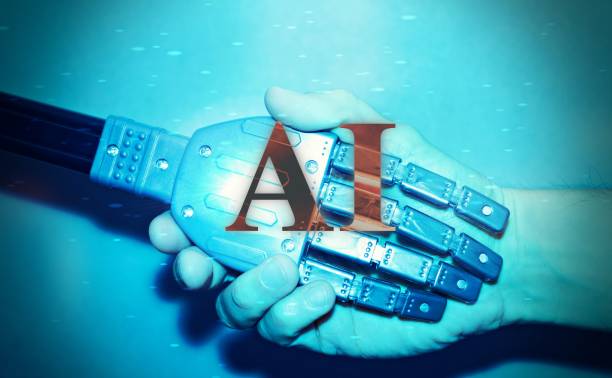
Despite the many advantages of using artificial intelligence robots, the development and use of this technology is also associated with challenges.
Some of these challenges include:
- High cost
- Technical complexity
- Ethical concerns
- Impact on the labor market
High cost is one of the most important challenges facing the development of artificial intelligence robots.
Designing, building, and maintaining robots is usually very expensive, and this can prevent the widespread use of this technology in various industries.
In addition, the development of algorithms and machine learning models also requires a lot of investment in research and development.
Technical complexity is another challenge facing the development of artificial intelligence robots.
Designing and building robots that are capable of performing complex tasks requires high knowledge and expertise in various fields such as robotics, artificial intelligence, mechanical engineering, and electrical engineering.
Ethical concerns are another challenge facing the development of artificial intelligence robots.
The use of robots in various fields can lead to the emergence of numerous ethical issues.
For example, the use of robots in war can lead to reduced accountability for war crimes.
Impact on the labor market is another challenge facing the development of artificial intelligence robots.
The widespread use of robots can lead to the loss of many jobs.
This can lead to increased unemployment and inequality in society.
With the expansion of artificial intelligence robots, many people become unemployed.
The Future of Artificial Intelligence Robots
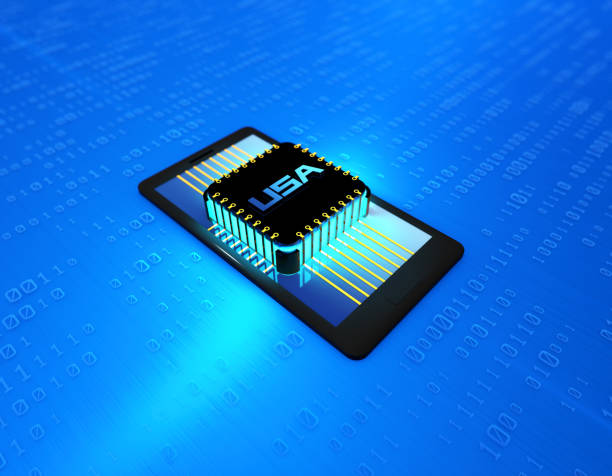
The future of artificial intelligence robots looks very bright.
With the increasing advances in fields such as deep learning, natural language processing, and computer vision, we will see the emergence of smarter robots that are capable of performing more complex tasks.
These robots will be widely used in various industries, including manufacturing, healthcare, transportation, and services, and will play an important role in improving productivity and the quality of human life.
In the future, robots will be able to communicate with humans more naturally and effectively, solve problems automatically, and learn from their experiences.
This can lead to the creation of smarter automation systems that are capable of performing complex tasks without the need for direct human intervention.
However, the development of artificial intelligence robots requires attention to the ethical and social challenges associated with this technology.
It is necessary to prevent the misuse of this technology by developing appropriate laws and regulations and ensure that it is used to improve human life. Artificial intelligence robots can make human life much easier.
| Field | Prediction |
|---|---|
| Manufacturing | Complete automation of production lines, use of robots for performing complex and dangerous tasks |
| Healthcare | Use of robots for precise surgeries, providing medication, caring for patients |
| Transportation | Self-driving cars, cargo delivery drones, intelligent traffic management systems |
| Services | Waiter robots, cleaning robots, guide robots |
Ethical Considerations in the Development and Use of Intelligent Robots
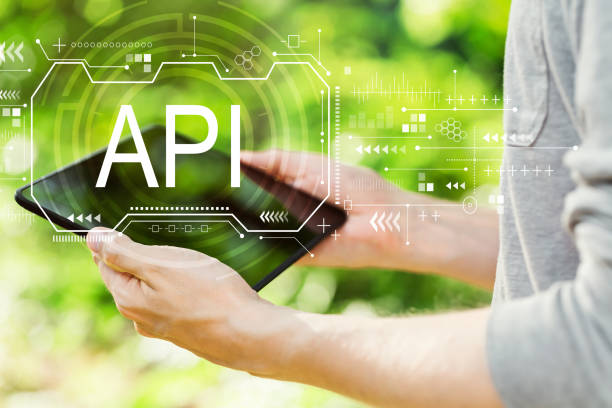
As intelligent robots are increasingly integrated into our lives, attention to the ethical considerations surrounding their development and use becomes more important.
Some of these considerations include:
- Privacy
- Accountability
- Discrimination
- Transparency
Privacy is one of the most important ethical considerations in the development of artificial intelligence robots.
Robots usually collect a lot of information about their users.
This information can include personal data, behavioral data, or location data.
It is necessary to protect this information properly and prevent its misuse.
Accountability is another ethical consideration in the development of artificial intelligence robots.
If a robot causes damage, who will be responsible? The developer, the manufacturer, the user, or the robot itself? It is necessary to develop appropriate laws and regulations to determine liability for damages caused by the operation of robots.
Discrimination is another ethical consideration in the development of artificial intelligence robots.
Machine learning algorithms may make discriminatory decisions based on their training data.
It is necessary to prevent this and ensure that robots treat all people fairly.
Transparency is another ethical consideration in the development of artificial intelligence robots.
It is necessary for the operation of robots to be transparent and understandable.
Users should be able to understand how the robot makes decisions and why it has made a particular decision.
Artificial intelligence robots must work correctly.
Does your company’s website make a professional and lasting first impression on potential customers? Rasaweb, with its professional corporate website design, not only represents the credibility of your brand but also opens a path for the growth of your business.
✅ Create a powerful and reliable brand image
✅ Attract target customers and increase sales
⚡ Get free consultation
The Role of Governments and Organizations in Regulating Artificial Intelligence Robots
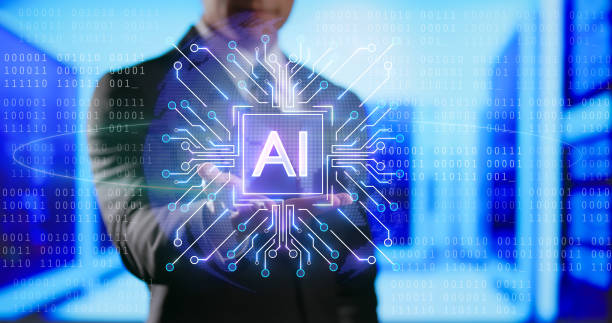
Given the widespread impacts that artificial intelligence robots can have on society, governments and organizations play an important role in regulating this technology.
Some of the tasks of governments and organizations in this field include:
- Developing laws and regulations
- Supporting research and development
- Education and awareness
- International cooperation
Developing laws and regulations is one of the most important tasks of governments and organizations in regulating artificial intelligence robots.
It is necessary to develop laws that protect the privacy of users, determine accountability for damages caused by the operation of robots, prevent discrimination, and ensure transparency.
Supporting research and development is another task of governments and organizations in regulating artificial intelligence robots.
It is necessary for governments to support research and development in the field of artificial intelligence robots by providing funding, establishing research centers, and supporting start-up companies.
Education and awareness is another task of governments and organizations in regulating artificial intelligence robots.
It is necessary for governments and organizations to increase public awareness about artificial intelligence robots by holding training courses, seminars, and conferences and to familiarize people with the benefits and challenges of this technology.
International cooperation is another task of governments and organizations in regulating artificial intelligence robots.
It is necessary for governments and organizations to cooperate with each other to develop appropriate international laws and regulations for regulating artificial intelligence robots.
Artificial intelligence robots are progressing in all countries.
How Artificial Intelligence Robots Will Transform Our Lives

Artificial intelligence robots have the potential to transform our lives in various ways.
This technology can make significant improvements in various fields such as manufacturing, healthcare, transportation, services, and education.
In the future, robots will be able to automate repetitive and tedious tasks and free humans to focus on more creative and valuable tasks.
Robots will be able to assist humans in performing daily tasks and improve their quality of life.
However, it is necessary to use this technology correctly, taking into account the ethical and social challenges associated with it, and to ensure that it is used to improve the lives of all humans.
Artificial intelligence robots should be in the service of humanity and not the other way around.
For example, in the field of education, intelligent robots can act as personalized teachers and help students learn at their own pace and in their own way.
In the field of healthcare, robots can assist doctors in performing precise surgeries and care for patients at home.
Artificial intelligence robots even have an impact on personal life.
Frequently Asked Questions
| Row | Question | Answer |
|---|---|---|
| 1 | What is an Artificial Intelligence Robot? | An Artificial Intelligence Robot is a machine that can understand, reason, learn, and solve problems, and can perform complex tasks with relative autonomy. |
| 2 | What are the most important applications of artificial intelligence robots? | The main applications include industrial manufacturing, customer service (chatbots), medicine and surgery, self-driving transportation, space exploration, and military affairs. |
| 3 | What is the main difference between an artificial intelligence robot and a regular robot? | A regular robot only follows programmed instructions, while an artificial intelligence robot can learn from data, make decisions, and adapt to new environments. |
| 4 | How do artificial intelligence robots learn? | They identify patterns and improve their performance through machine learning algorithms (such as deep learning, reinforcement learning) and processing vast amounts of data. |
| 5 | Can artificial intelligence robots have emotions? | Currently, artificial intelligence robots do not have real emotions in the human sense. They can mimic or recognize emotions, but they do not have the understanding and experience of them. |
| 6 | What are the current limitations of artificial intelligence robots? | Limitations include the need for large amounts of data, the inability to understand abstract concepts, the lack of real creativity, ethical issues, and the challenges of generalizability in new environments. |
| 7 | What is the role of artificial intelligence in the development of Humanoid robots? | Artificial intelligence helps humanoid robots to walk, maintain balance, understand the environment, interact with humans, and perform complex tasks. |
| 8 | How is the future of artificial intelligence robots predicted? | It is predicted that artificial intelligence robots will become smarter, more autonomous, and capable of performing more complex tasks in daily life and industry, and their interaction with humans will increase. |
| 9 | Can artificial intelligence robots replace all human jobs? | It is unlikely that all human jobs will be replaced. Robots will take over many repetitive and dangerous tasks, but jobs that require creativity, empathy, and ethical judgment will remain. |
| 10 | What ethical and social challenges are raised by the expansion of artificial intelligence robots? | Challenges include issues related to privacy, data security, ethical decision-making by robots, the impact on employment, and accountability in case of errors. |
And other services of Rasa Web advertising agency in the field of advertising
Smart Direct Marketing: A new service to increase SEO ranking improvement through Google Ads management.
Smart UI/UX: Professional optimization to attract customers using user experience customization.
Smart Conversion Rate Optimization: Designed for businesses looking to increase sales through intelligent data analysis.
Smart Website Development: Transform sales with user experience customization.
Smart Google Ads: Professional optimization to manage campaigns using a SEO-based content strategy.
And more than a hundred other services in the field of internet advertising, advertising consulting, and organizational solutions
Internet Advertising | Advertising Strategy | Advertorial
Resources
Automation with Artificial Intelligence: A Big Transformation in the Business World
,The Application of Artificial Intelligence in Business and Daily Life
,What is Artificial Intelligence and What are its Applications? — In Simple Terms (+ Free Training Video)
,The Application of Artificial Intelligence in Industry | 10 Examples of Real Applications of Artificial Intelligence
? To boost your business in the digital world, Rasaweb Afrin is your strategic partner. We pave the way for your online success by providing comprehensive digital marketing services including SEO, professional social media management, and multilingual website design. Join Rasaweb Afrin and make your online presence more powerful than ever.
📍 Tehran, Mirdamad Street, next to the Central Bank, South Kazerun Alley, Ramin Alley No. 6

